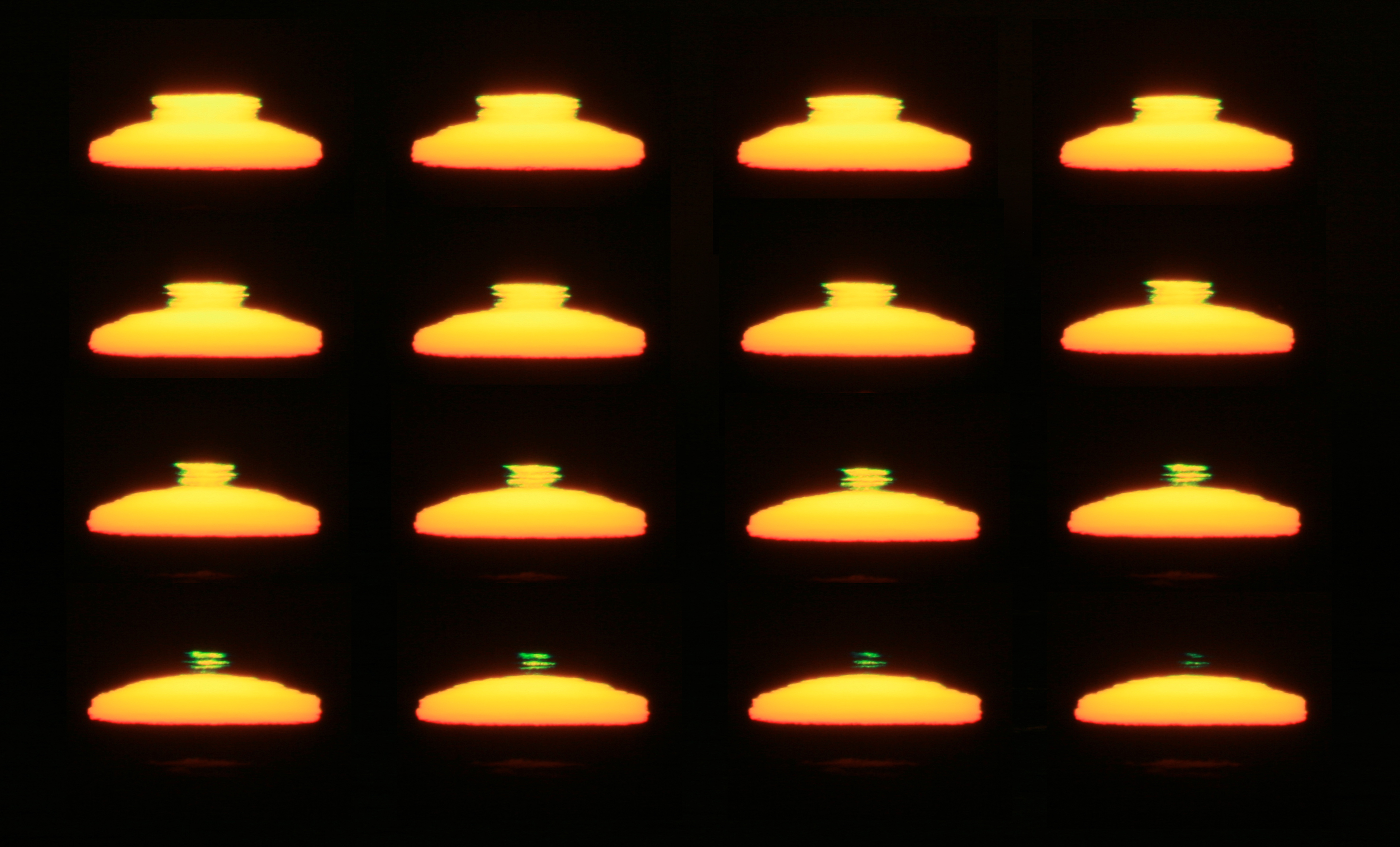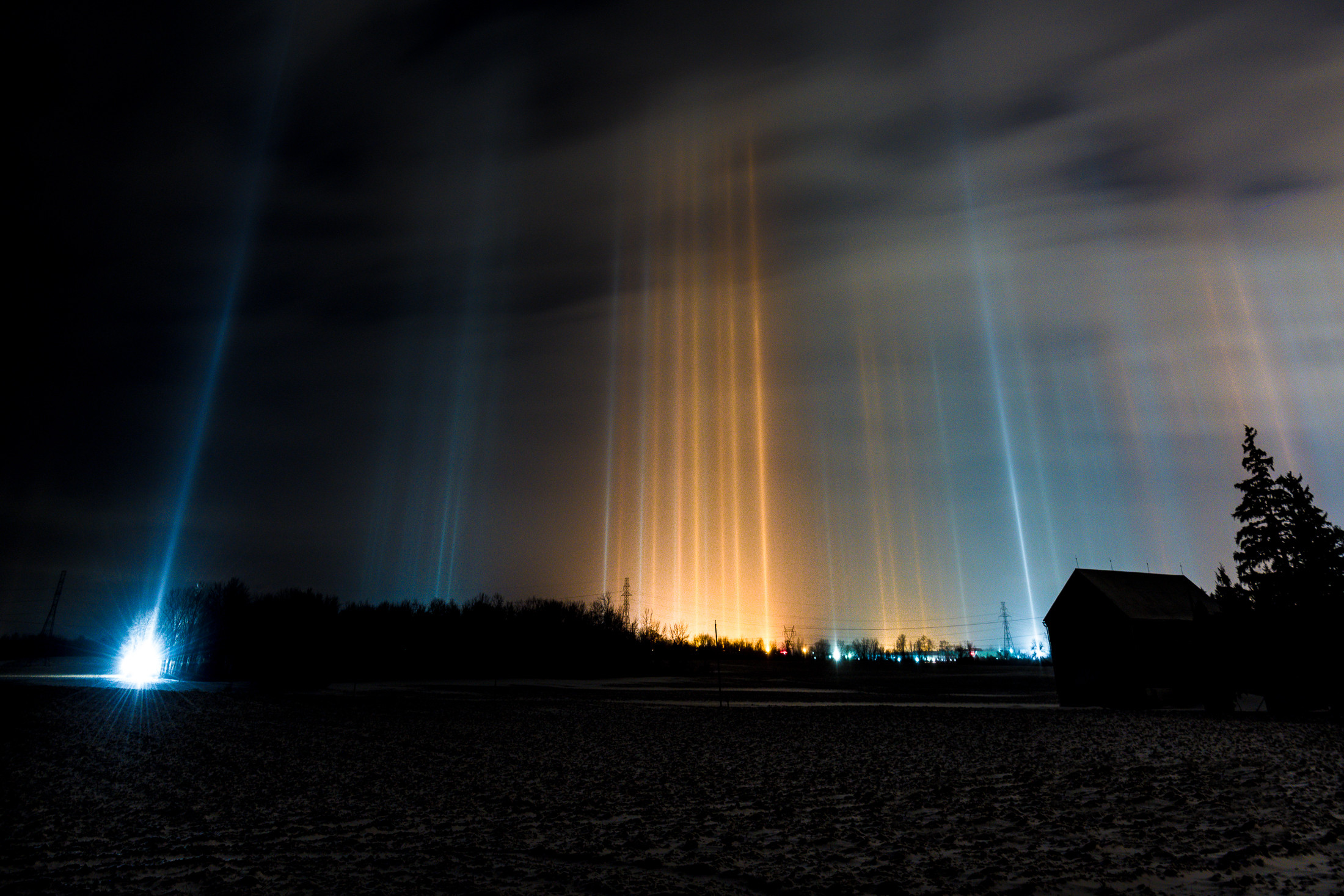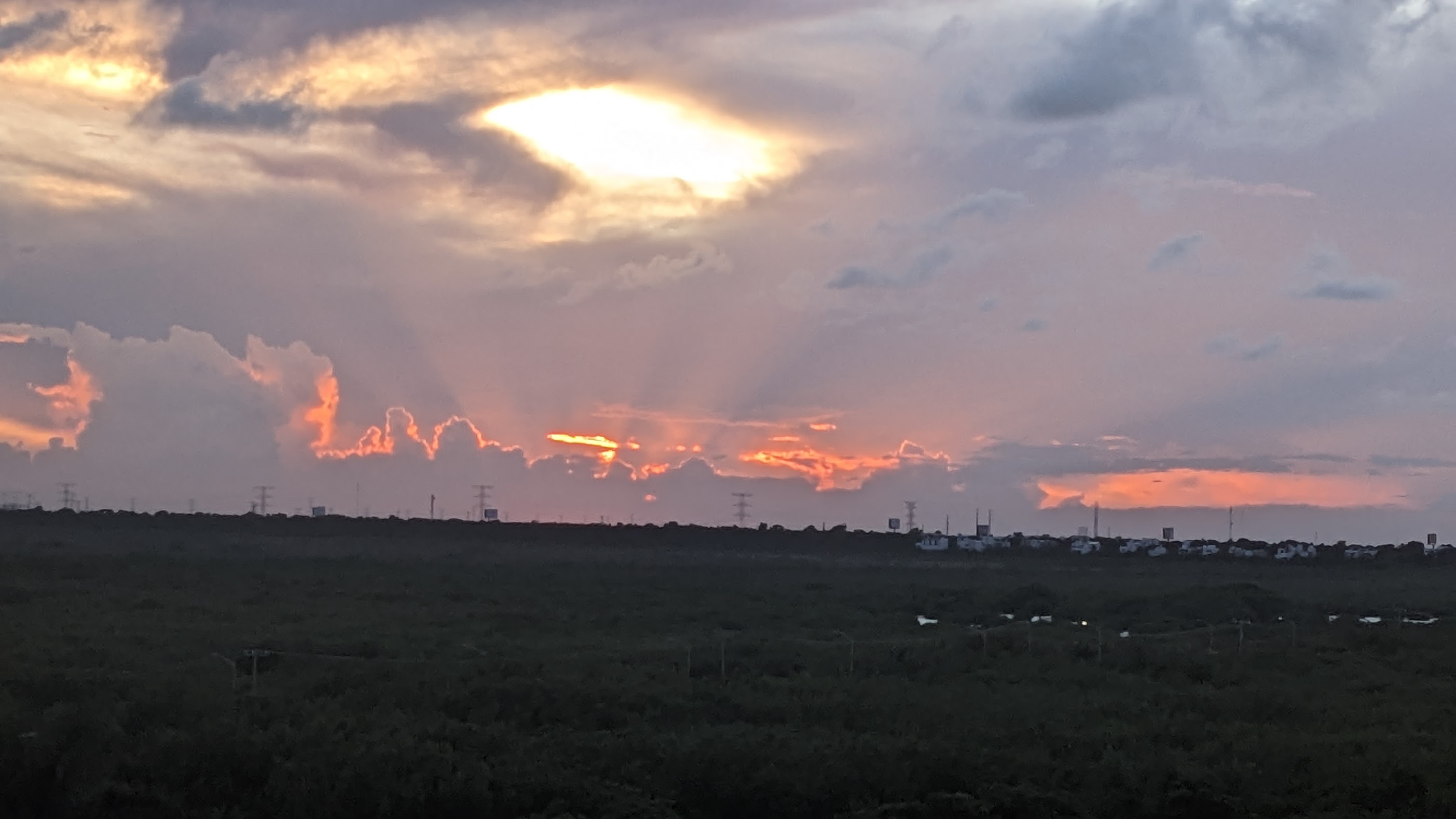|
Photometeor
In atmospheric optics, a photometeor is a bright object or other optical phenomenon appearing in the Earth's atmosphere when sunlight or moonlight creates a reflection, refraction, diffraction or interference under particular circumstances. The most common examples include halos, rainbows, fogbows, cloud iridescences (or irisation), glories, Bishop's rings, coronas, crepuscular rays, sun dogs, light pillars, mirages, scintillation Scintillation can refer to: *Scintillation (astronomy), atmospheric effects which influence astronomical observations *Interplanetary scintillation, fluctuations of radio waves caused by the solar wind *Scintillation (physics), a flash of light pro ...s, and green flashes. Photometeors are not reported in routine weather observation. See also * Hydrometeor * Rayleigh scattering Notes and references External links South pole halos - an example of halos and arcs around the south polar sun Atmospheric optical phenomena {{meteorology-stub ... [...More Info...] [...Related Items...] OR: [Wikipedia] [Google] [Baidu] |
Cloud Iridescence
Cloud iridescence or irisation is a colorful optical phenomenon that occurs in a cloud and appears in the general proximity of the Sun or Moon. The colors resemble those seen in soap bubbles and oil on a water surface. It is a type of photometeor. This fairly common phenomenon is most often observed in altocumulus, cirrocumulus, lenticular, and cirrus clouds. They sometimes appear as bands parallel to the edge of the clouds. Iridescence is also seen in the much rarer polar stratospheric clouds, also called nacreous clouds. The colors are usually pastel, but can be very vivid or mingled together, sometimes similar to mother-of-pearl. When appearing near the Sun, the effect can be difficult to spot as it is drowned in the Sun's glare. This may be overcome by shielding the sunlight with one's hand or hiding it behind a tree or building. Other aids are dark glasses, or observing the sky reflected in a convex mirror or in a pool of water. Etymology Irisations are named after t ... [...More Info...] [...Related Items...] OR: [Wikipedia] [Google] [Baidu] |
Atmospheric Optics
Atmospheric optics is "the study of the optical characteristics of the atmosphere or products of atmospheric processes .... [including] temporal and spatial resolutions beyond those discernible with the naked eye". Meteorological optics is "that part of atmospheric optics concerned with the study of patterns observable with the naked eye". Nevertheless, the two terms are sometimes used interchangeably. Meteorological optical phenomena, as described in this article, are concerned with how the optical properties of Earth's atmosphere cause a wide range of optical phenomena and visual perception phenomena. Examples of meteorological phenomena include: *The diffuse sky radiation, blue color of the sky. This is from Rayleigh scattering, which redirects higher frequency/shorter wavelength (blue) sunlight back into the field of view of the observer. *The reddish color of the Sun when it is observed through a air mass (astronomy), thick atmosphere, as during a sunrise or sunset. This is b ... [...More Info...] [...Related Items...] OR: [Wikipedia] [Google] [Baidu] |
Corona (optical Phenomenon)
In meteorology, a corona (plural ''coronae'') is an optical phenomenon produced by the diffraction of sunlight or moonlight (or, occasionally, bright starlight or planetlight) by individual small water drop (liquid), droplets and sometimes tiny ice crystals of a cloud or on a foggy glass surface. In its full form, a corona consists of several concentric objects, concentric, pastel (color), pastel-colored rings around the astronomical object, celestial object and a central bright area called ''aureole''. The aureole is often (especially in case of the Moon) the only visible part of the corona and has the appearance of a bluish-white disk which fades to reddish-brown towards the edge. The angular diameter of a corona depends on the particle size, sizes of the water droplets involved; smaller droplets produce larger coronae. For the same reason, the corona is the most pronounced when the size of the droplets is most uniform. Coronae differ from halo (optical phenomenon), halos in tha ... [...More Info...] [...Related Items...] OR: [Wikipedia] [Google] [Baidu] |
Rayleigh Scattering
Rayleigh scattering ( ), named after the 19th-century British physicist Lord Rayleigh (John William Strutt), is the predominantly elastic scattering of light or other electromagnetic radiation by particles much smaller than the wavelength of the radiation. For light frequencies well below the resonance frequency of the scattering particle (normal dispersion regime), the amount of scattering is inversely proportional to the fourth power of the wavelength. Rayleigh scattering results from the electric polarizability of the particles. The oscillating electric field of a light wave acts on the charges within a particle, causing them to move at the same frequency. The particle, therefore, becomes a small radiating dipole whose radiation we see as scattered light. The particles may be individual atoms or molecules; it can occur when light travels through transparent solids and liquids, but is most prominently seen in gases. Rayleigh scattering of sunlight in Earth's atmosphere causes d ... [...More Info...] [...Related Items...] OR: [Wikipedia] [Google] [Baidu] |
Hydrometeor
In meteorology, precipitation is any product of the condensation of atmospheric water vapor that falls under gravitational pull from clouds. The main forms of precipitation include drizzle, rain, sleet, snow, ice pellets, graupel and hail. Precipitation occurs when a portion of the atmosphere becomes saturated with water vapor (reaching 100% relative humidity), so that the water condenses and "precipitates" or falls. Thus, fog and mist are not precipitation but colloids, because the water vapor does not condense sufficiently to precipitate. Two processes, possibly acting together, can lead to air becoming saturated: cooling the air or adding water vapor to the air. Precipitation forms as smaller droplets coalesce via collision with other rain drops or ice crystals within a cloud. Short, intense periods of rain in scattered locations are called showers. Moisture that is lifted or otherwise forced to rise over a layer of sub-freezing air at the surface may be condensed into ... [...More Info...] [...Related Items...] OR: [Wikipedia] [Google] [Baidu] |
Weather Observation
Weather reconnaissance is the acquisition of weather data used for research and planning. Typically the term reconnaissance refers to observing weather from the air, as opposed to the ground. Methods Aircraft Helicopters are not built to withstand the severe turbulence encountered in hurricane rainbands and eye walls. One reason is that a helicopter receives all of its lift from its rotating blades, and they are most likely to break off in hurricane conditions. The Lockheed C-130 Hercules is used as a weather reconnaissance aircraft, with 5 different versions being used. The current version is the Lockheed C-130J. The Lockheed WC-130J aircraft is a venerable aircraft for weather reconnaissance. It flies directly into the hurricane, typically penetrating the hurricane's eye several times per mission at altitudes between and . The 53rd WRS Hurricane Hunters operate ten WC-130J aircraft for weather reconnaissance. The WP-3D Orion aircraft flown by the NOAA Hurricane Hunter ... [...More Info...] [...Related Items...] OR: [Wikipedia] [Google] [Baidu] |
Green Flash
The green flash and green ray are meteorological optical phenomena that sometimes occur transiently around the moment of sunset or sunrise. When the conditions are right, a distinct green spot is briefly visible above the Sun's upper limb; the green appearance usually lasts for no more than two seconds. Rarely, the green flash can resemble a green ray shooting up from the sunset or sunrise point. Green flashes occur because the Earth's atmosphere can cause the light from the Sun to separate, or refract, into different colors. Green flashes are a group of similar phenomena that stem from slightly different causes, and therefore, some types of green flashes are more common than others. Observing Green flashes may be observed from any altitude. They usually are seen at an unobstructed horizon, such as over the ocean, but are possible over cloud tops and mountain tops as well. They may occur at any latitude, although at the equator, the flash rarely lasts longer than a sec ... [...More Info...] [...Related Items...] OR: [Wikipedia] [Google] [Baidu] |
Scintillation (astronomy)
Twinkling, also called scintillation, is a generic term for variations in apparent brightness, colour, or position of a distant luminous object viewed through a medium.Wang, Ting-I; Williams, Donn"Scintillation technology bests NIST" , ''InTech'', May 1, 2005. If the object lies outside the Earth's atmosphere, as in the case of stars and planets, the phenomenon is termed ''astronomical scintillation''; for objects within the atmosphere, the phenomenon is termed ''terrestrial scintillation''. As one of the three principal factors governing astronomical seeing (the others being light pollution and cloud cover), atmospheric scintillation is defined as variations in illuminance only. In simple terms, twinkling of stars is caused by the passing of light through different layers of a turbulent atmosphere. Most scintillation effects are caused by anomalous atmospheric refraction caused by small-scale fluctuations in air density usually related to temperature gradients. Scintillation ... [...More Info...] [...Related Items...] OR: [Wikipedia] [Google] [Baidu] |
Mirage
A mirage is a naturally-occurring optical phenomenon in which light rays bend via refraction to produce a displaced image of distant objects or the sky. The word comes to English via the French ''(se) mirer'', from the Latin ''mirari'', meaning "to look at, to wonder at". Mirages can be categorized as "inferior" (meaning lower), "superior" (meaning higher) and " Fata Morgana", one kind of superior mirage consisting of a series of unusually elaborate, vertically stacked images, which form one rapidly-changing mirage. In contrast to a hallucination, a mirage is a real optical phenomenon that can be captured on camera, since light rays are actually refracted to form the false image at the observer's location. What the image appears to represent, however, is determined by the interpretive faculties of the human mind. For example, inferior images on land are very easily mistaken for the reflections from a small body of water. Inferior mirage In an inferior mirage, the mirage ima ... [...More Info...] [...Related Items...] OR: [Wikipedia] [Google] [Baidu] |
Light Pillar
A light pillar is an atmospheric optical phenomenon in which a vertical beam of light appears to extend above and/or below a light source. The effect is created by the reflection of light from tiny ice crystals that are suspended in the atmosphere or that comprise high-altitude clouds (e.g. cirrostratus or cirrus clouds).Colonne lumineuse by the . If the light comes from the Sun (usually when it is near or even below the horizon), the phenomenon is called a sun pillar or sola ... [...More Info...] [...Related Items...] OR: [Wikipedia] [Google] [Baidu] |
Sun Dog
A sun dog (or sundog) or mock sun, also called a parhelion (plural parhelia) in meteorology, is an atmospheric optical phenomenon that consists of a bright spot to one or both sides of the Sun. Two sun dogs often flank the Sun within a 22° halo. The sun dog is a member of the family of halos caused by the refraction of sunlight by ice crystals in the atmosphere. Sun dogs typically appear as a pair of subtly colored patches of light, around 22° to the left and right of the Sun, and at the same altitude above the horizon as the Sun. They can be seen anywhere in the world during any season, but are not always obvious or bright. Sun dogs are best seen and most conspicuous when the Sun is near the horizon. Formation and characteristics Sun dogs are commonly caused by the refraction and scattering of light from horizontally oriented plate-shaped hexagonal ice crystals either suspended in high and cold cirrus or cirrostratus clouds, or drifting in freezing moist air at low ... [...More Info...] [...Related Items...] OR: [Wikipedia] [Google] [Baidu] |
Crepuscular Ray
Crepuscular rays are sunbeams that originate when the Sun is just below the horizon, during the twilight period. Crepuscular rays are noticeable when the contrast (vision), contrast between light and dark is most obvious. Crepuscular comes from the Latin word , meaning "twilight". Crepuscular rays usually appear orange because optical path, the path through the atmosphere at sunrise and sunset passes through up to 40 times as much air as rays from a high Sun at midday. particulates, Particles in the air light scattering by particles, scatter short-wavelength light (blue and green) through Rayleigh scattering much more strongly than longer-wavelength yellow and red light. Loosely, the term ''crepuscular rays'' is sometimes extended to the general phenomenon of rays of sunlight that appear to converge at a point in the sky, irrespective of time of day. A rare related phenomena are anticrepuscular rays which can appear at the same time (and coloration) as crepuscular rays but in ... [...More Info...] [...Related Items...] OR: [Wikipedia] [Google] [Baidu] |
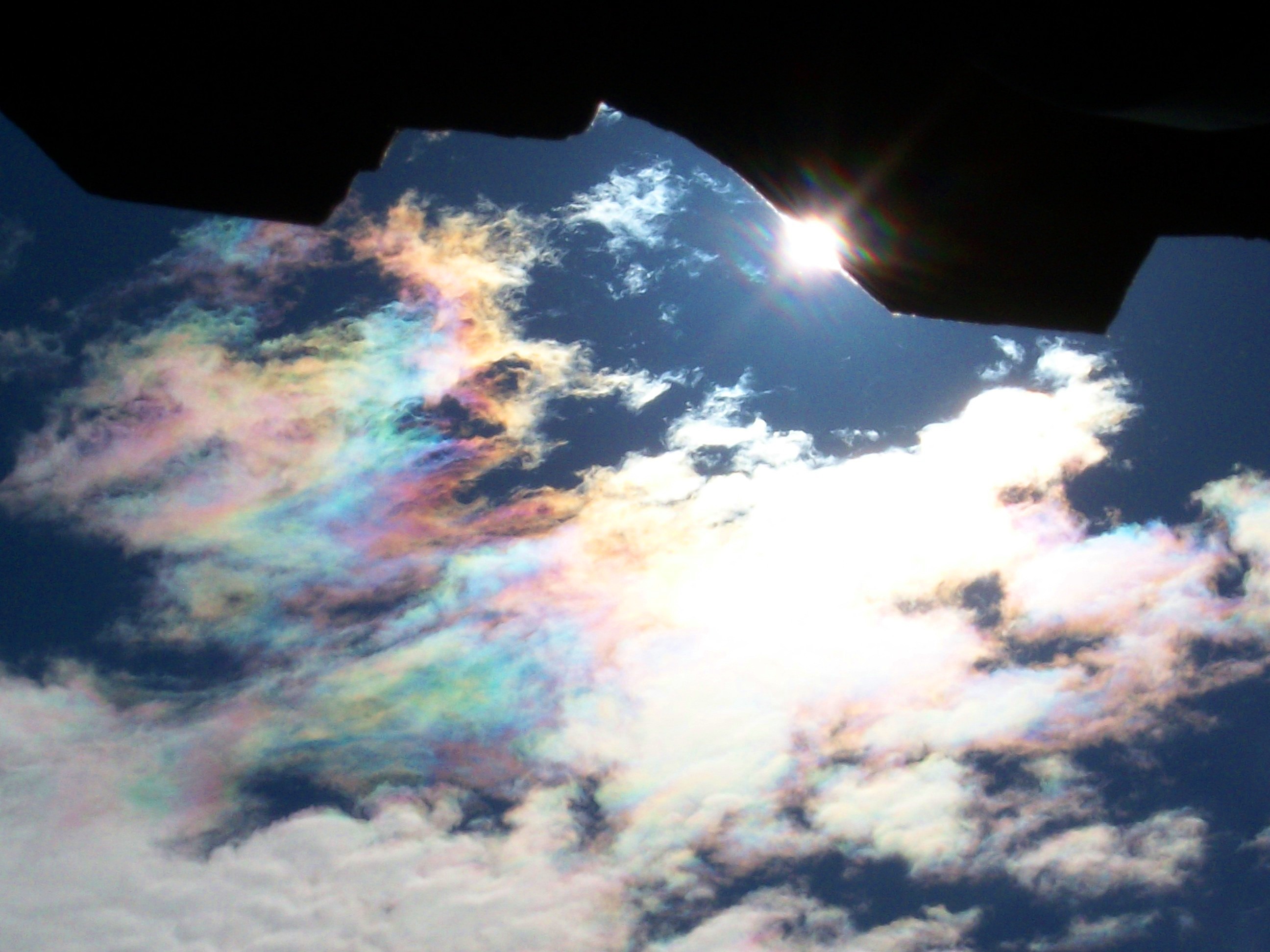

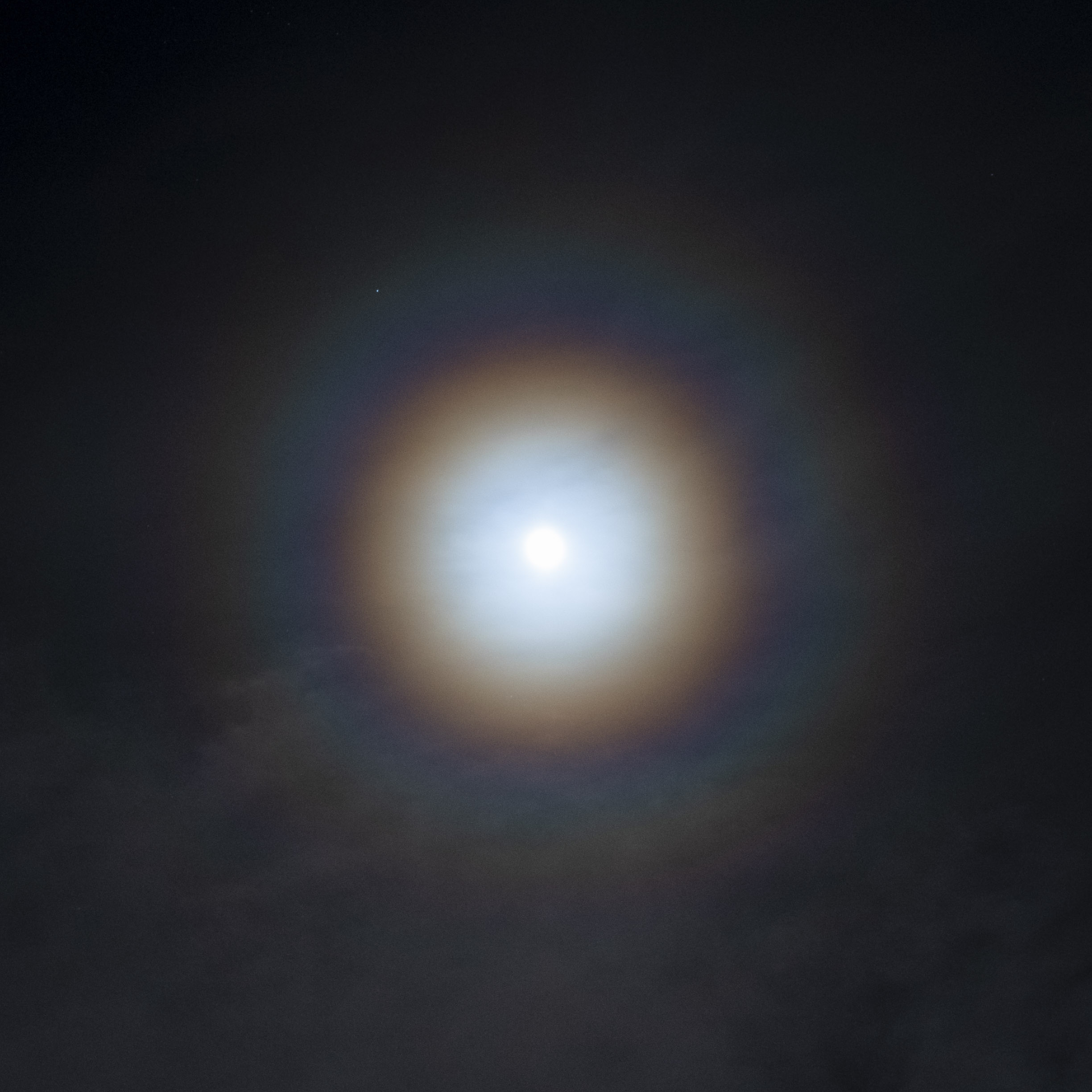
.jpg)


